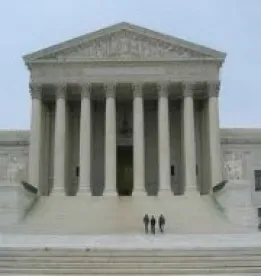On July 20, 2012, the U.S. Court of Appeals for the Federal Circuit heard oral arguments in The Association for Molecular Pathology v. USPTO (Myriad). This important case considers whether isolated genes are patent eligible subject matter under 35 U.S.C. § 101 in view of the Supreme Court’s recent decision in Mayo v. Prometheus, which held a method applying an abstract idea through conventional and routine techniques was not patent eligible.
Background
Myriad Genetics holds patents directed to isolated DNA encoding the BRCA1 gene and cancer screening methods based on identifying alterations in BRCA1. The Association for Molecular Pathology (AMP) and other plaintiffs sued the USPTO and Myriad, alleging isolated DNA is not patent eligible because it is a product of nature. The Federal Circuit held in a split decision that claims directed to isolated DNA and screening methods for potential cancer therapeutics are patentable subject matter. 653 F.3d 1329 (Fed. Cir. 2011). Judge Bryson’s dissent argued that an isolated gene is not different from a native gene and, like the extraction of a natural mineral, is not patent eligible.
The Supreme Court decided Mayo v. Prometheus on March 20, 2012, unanimously ruling that Prometheus’ patent claims directed to methods of optimizing drug treatment are not patentable subject matter. 566 U.S. __, 132 S. Ct. 1289 (2012). A few days later, the Supreme Court vacated and remanded Myriad for further consideration based on the Mayo decision.
Summary of the Oral Arguments
Myriad: Myriad argued that Diamond v. Chakrabarty, which held inventions requiring the hand of man were patent eligible, supports the patentability of isolated DNA claims. 447 U.S. 303 (1980). Myriad asserted that the preemption of natural products is not a separate test for patent eligibility, but a proxy for the appropriate test. Judge Bryson questioned whether isolating a gene was akin to chopping down a tree and patenting the resulting tree trunk. In response, Myriad argued that an isolated gene’s “start and end points don’t exist” until the inventor finds them. During rebuttal, Myriad offered that the use of a old drug in a new way is patentable. Judge Moore replied that while she understood the utility of primers and probes, the use of an entire gene merely constituted the natural function of a gene: to make protein.
Myriad asserted that the patentability of screening method claim 20 should not be revisited because it was not raised in the petition for certiorari. Judge Bryson disagreed, saying the hearing was a “do over . . . not subject or limited by what the petitioners said” in the petition. Myriad responded that claim 20 is nonetheless patent eligible because it includes a new transformed host cell with an altered BRCA1 gene.
Oral Arguments Heard By Federal Circuit in Myriad Gene Patent Case
AMP: AMP argued that isolated DNA claims are invalid under Mayo because they preempt the use of laws and products of nature. AMP asserted Myriad’s claims had a “stunning breadth.” However, Judge Lourie indicated this argument constituted a different legal issue under 35 U.S.C. § 112. Judge Moore asserted that breadth was not relevant under Mayo and that AMP’s preemption argument was a “waste of time and space.” Next, AMP argued that claim 20 parallels Mayo because Myriad doesn’t perform the cell transformation step and merely applies various factors to the cells and observes how the cells respond. In response, Judge Moore questioned if a “host cell is not found in nature . . . isn’t the patent for using something not found in nature?”
U.S. Government: The U.S. argued that access to isolated DNA should be free to all and that changes incidental to the extraction of a natural element from the environment do not impart patentability. Judge Moore inquired whether the U.S. still supported its “magic microscope” test whereby any natural molecule that a “magic” microscope could find inside a cell is not patent eligible because such molecules are products of nature. The U.S. responded that the “magic microscope” was more of a metaphor than a test.
The Federal Circuit’s formal decision is not expected to issue for several months. Regardless of whether the panel reaffirms its prior decision of validity by distinguishing Mayo or some judges have changed their view as the spirited oral argument might suggest, it is likely that this highly contested case may ultimately be decided by the Supreme Court.
*The authors thank Summer Associate Brian M. Dudley for his contributions to this alert.





 />i
/>i
